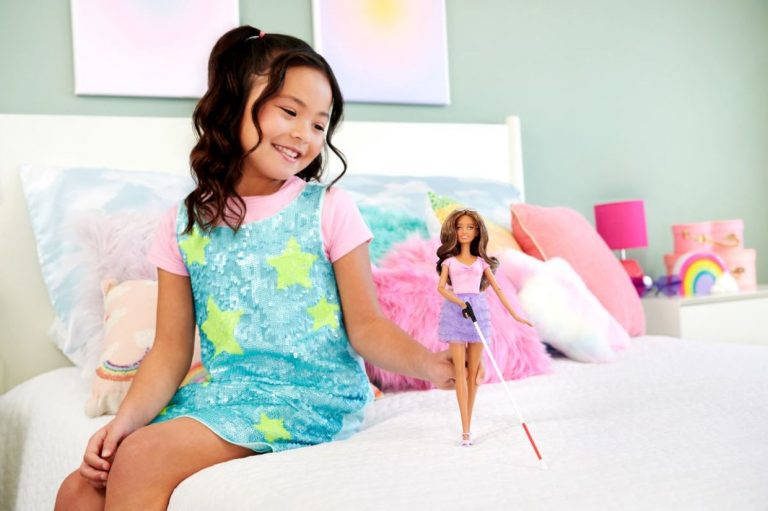This is the first doll for the blind to come with a walking stick.
July 29, 2024
0
This iconic fashion doll is even more inclusive | Introducing the first blind doll that comes with a cane.
Kids want to play with dolls that look like them, which is why Mattel’s Fashionista collection is the most diverse and inclusive collection yet, with 175 Barbie dolls of all skin tones, hair and body diversity, as well as Barbies with disabilities, including one with a hearing aid and one in a wheelchair. According to a press release from the toy company, Mattel has added two more inclusive dolls to the collection.
“We know that Barbie is more than just a doll – she’s a symbol of self-expression and belonging,” Krista Berger, the company’s senior vice president, Barbie and global head of dolls, said in a press release. “We’re proud to introduce a blind Barbie doll and a Black doll with Down Syndrome to our Barbie Fashionista line, reinforcing our commitment to creating products that represent global belonging and inclusivity in the doll aisle.”
Introducing the new blind Barbie
According to Forbes, the blind Barbie was designed in collaboration with the American Foundation for the Blind (AFB), which advised the toy company on the doll’s look, accessories and packaging, including a specific gaze that is slightly upward and outward to reflect the gaze of a blind or visually impaired person. Her cane was placed in the right position and her outfit was designed with a ruffled skirt so that children could easily fasten it by feel.
Packaging features Braille markings and simple pull tabs, and AFB has also ensured that its retail website is screen reader accessible, something that will apply to the entire Fashionista line.
Lucy Edwards, a blind British disability activist and broadcaster who works with the Free Dolls campaign, told the Guardian: “[the doll means] “It means everything to me. As a teenager I felt alone with losing my sight and not having any role models like me. I was embarrassed about using a cane but if I had known Barbie had one, I would have felt completely differently about my own cane and it would have helped me feel less alone in my journey of accepting and embracing my blindness.”
Celebrating Black Barbie with Down Syndrome
The new Black Barbie with Down Syndrome follows the release of the first white Barbie with Down Syndrome in 2023, and was designed with input from the National Down Syndrome Society (NDSS) and a focus group of young Black women with Down Syndrome. According to Forbes, the focus group’s participation led to the inclusion of the doll’s braided hair texture.
The doll, like one released last year, was designed to resemble a person with Down syndrome, with a shorter build, low muscle tone, a round face with a flat nose bridge, slightly slanted eyes with white dots in the irises and single-lined palms.
According to a press release, the doll’s outfit emphasizes inclusion, with the blue and yellow outfit representing Down syndrome awareness and three arrows as part of the heart on her dress representing the third chromosome that people with Down syndrome have.
“NDSS is thrilled to introduce our second Barbie doll with Down Syndrome. Releasing this doll alongside our new blind Barbie doll marks an important step in expanding representation of the disability community,” NDSS president and CEO Kandi Pickard said in a press release. “We are proud to partner with Barbie as she continues to reflect our diverse and beautiful world.”
Both dolls are available to purchase online and in stores at major retailers. More children will be able to play with dolls that look like them, which will boost their self-esteem. But these new fashionistas aren’t just for kids who are blind, have Down Syndrome, have prosthetic limbs, empathic hearing aids, or have any of the conditions described here. All children can develop empathy and appreciation for all people.
You might also like:
New inspirational role model doll unveiled
Introducing fashion dolls with hearing aids
Barbie is now in a wheelchair and has a prosthetic leg.
Bonnie has dedicated her life to promoting social justice and enjoys writing about women’s empowerment, child advocacy, innovation in education, and environmental and sustainability advocacy.


